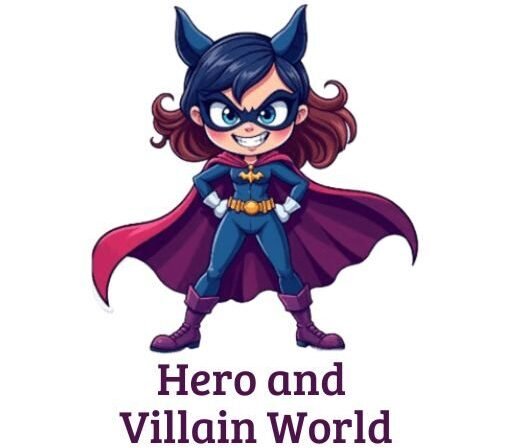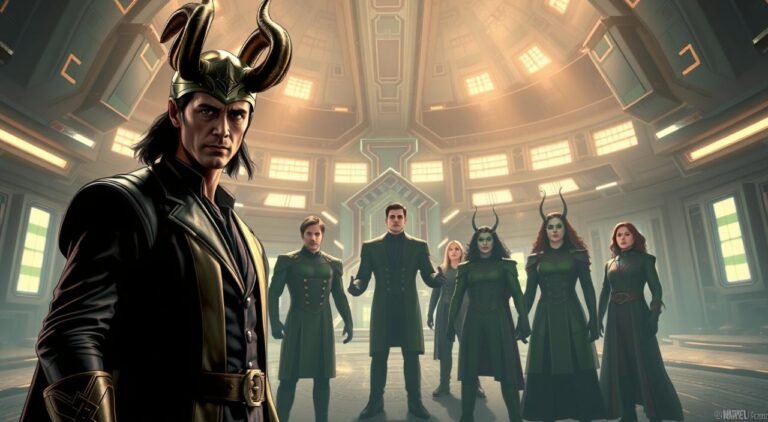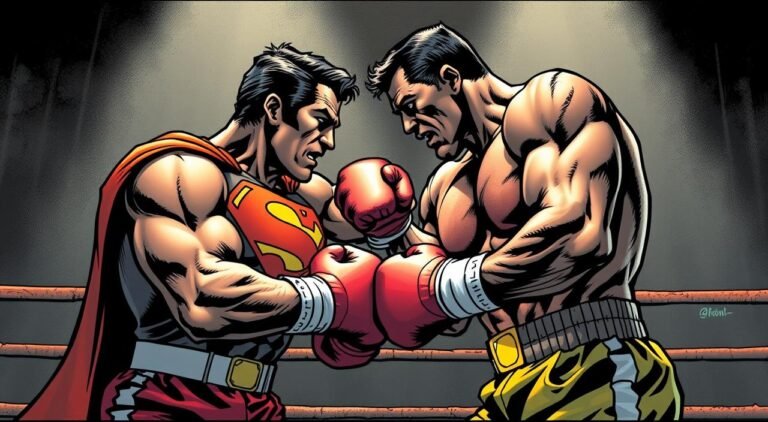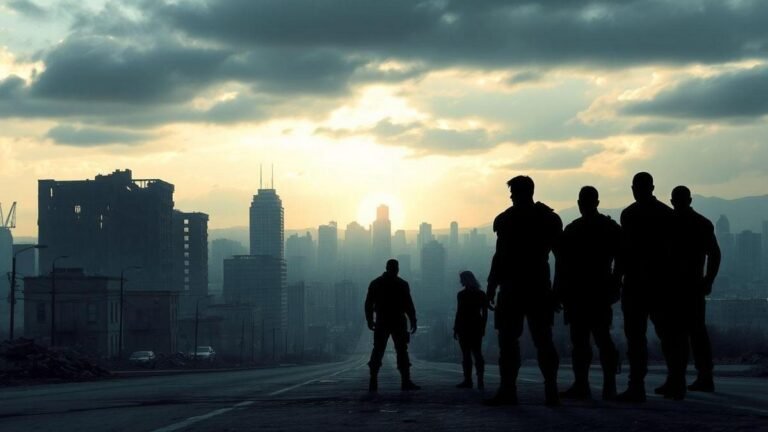The Psychological Impact of the Green Goblin on Spider-Man

As I reflect on Spider-Man’s rogues gallery, one villain stands out for the profound psychological impact on our web-slinging hero: the Green Goblin.
The complex relationship between Spider-Man and the Green Goblin is deeply rooted in their personal history, with Norman Osborn’s alter ego representing a twisted father figure to Peter Parker.
This dynamic is further complicated by the fact that Norman Osborn and the Green Goblin are intertwined, representing a disorder that has haunted Peter Parker throughout his heroic journey.
By examining their complex psychological dynamics, we can gain a deeper understanding of the lasting trauma inflicted on Peter Parker.
In this article, we’ll explore the intricate psychological relationship between Spider-Man and the Green Goblin, shedding light on the significance of their conflict across comics, films, and other media.
The Birth of an Iconic Nemesis
The Green Goblin’s debut in Amazing Spider-Man #14 initiated a complex and intriguing narrative that would evolve over time, eventually revealing Norman Osborn as the mastermind behind the mask.
Origins in the Comics
The Green Goblin’s first appearance marked the beginning of a mysterious and sinister character whose true identity was initially unknown.
As the character began to appear sporadically, speculation about his identity grew. For instance, the Green Goblin’s initial appearances were characterized by his cunning and technological prowess, setting the stage for a formidable foe.
To learn more about the Green Goblin’s comic book history, you can visit Marvel’s official website.
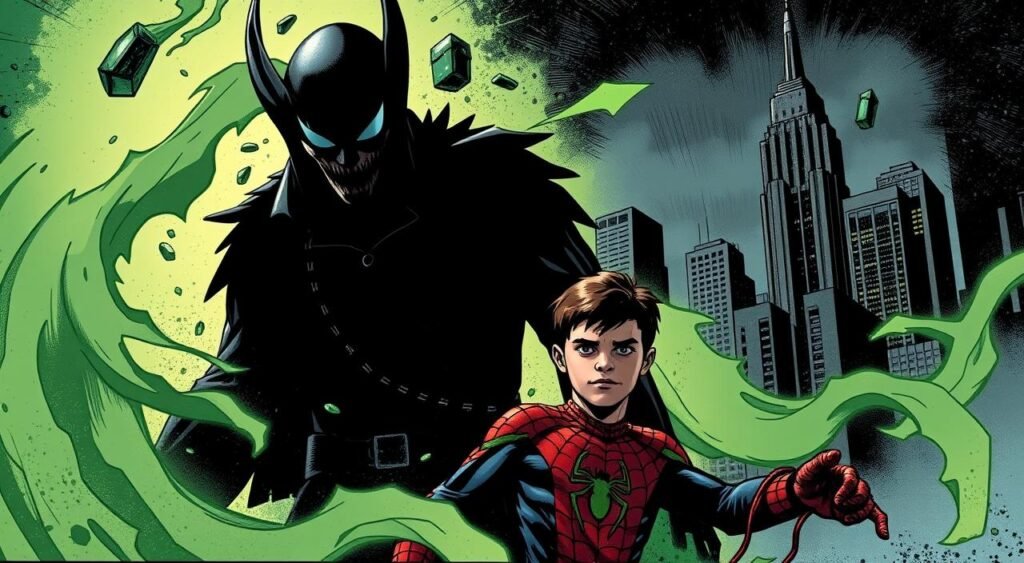
The character’s evolution was marked by a series of encounters with Spider-Man, each revealing more about the Goblin’s capabilities and motivations.
It wasn’t until Amazing Spider-Man #39 that the veil began to lift, and Norman Osborn’s connection to the Green Goblin started to become clear.
Norman Osborn Before the Goblin
Norman Osborn, introduced in Amazing Spider-Man #37, was depicted as a shady businessman with a willingness to do whatever it took to achieve his goals, including murder.
His business practices and relationship with Mendel Stromm showcased his ruthless nature, as he was willing to betray his partner to advance his own interests.
Moreover, Norman’s relationship with his son Harry was strained, establishing a pattern of neglect that would have lasting consequences.
This characterization laid the groundwork for his eventual transformation into the Green Goblin, a persona that would amplify his existing traits.
At this stage in his life, Norman Osborn was already demonstrating a disregard for family and a focus on his business, setting the stage for the conflicts that would arise in his future as the Green Goblin.
- Funko Pop Exclusive
- Metallic Vinyl Figure
- Green Goblin (1168)
Understanding Norman Osborn’s Psychology
Delving into Norman Osborn’s psyche reveals a complex web of motivations and characteristics that predated his transformation into the Green Goblin.
His psychological makeup played a crucial role in shaping his actions both as a businessman and as a family man.
The Ruthless Businessman
Norman Osborn’s business practices were marked by ruthless ambition and a willingness to do whatever it took to succeed. He betrayed his partner, Mendel Stromm, for personal gain, showcasing his narcissistic tendencies and lack of empathy.
This behavior was not a result of the Goblin formula but rather an inherent part of his personality. Osborn’s pursuit of power and control in the business world set a pattern for his later actions as the Green Goblin.
- He demonstrated a keen ability to manipulate situations to his advantage.
- His business dealings were characterized by a lack of moral integrity.
- The seeds of his villainy were sown long before the incident that transformed him into the Green Goblin.
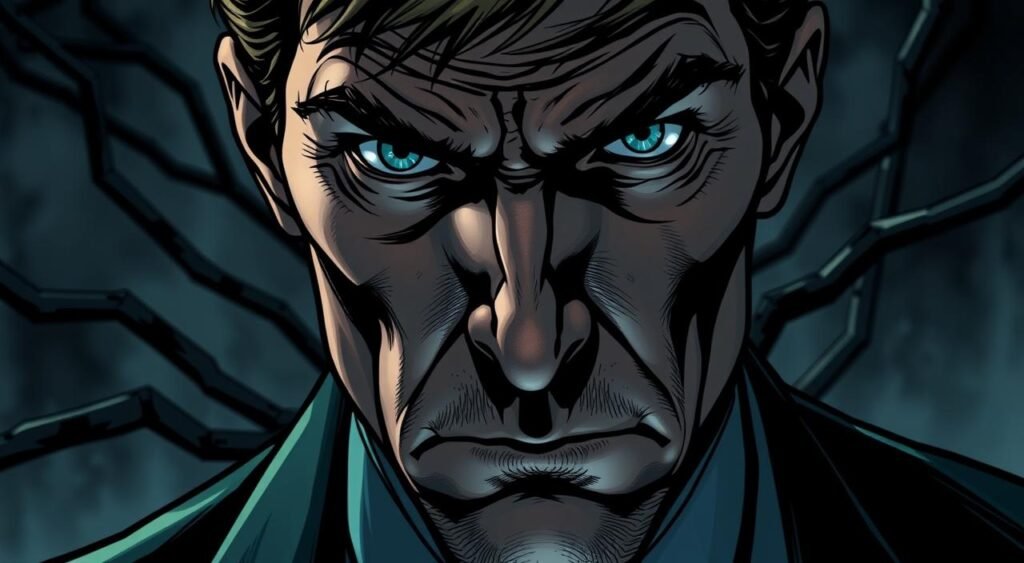
Father-Son Dynamics with Harry
The relationship between Norman Osborn and his son Harry was complicated and emotionally neglectful.
Norman’s inability to connect with Harry on an emotional level had a lasting impact on their father-son dynamics. This neglect shaped Harry’s development and his own psychological makeup, contributing to the strained relationship between the two.
Norman’s role as a father was overshadowed by his self-centered nature, a trait that was evident even before his transformation.
The emotional distance between Norman and Harry is a critical aspect of understanding the Osborn family dynamics and its impact on Harry’s life.
The Goblin Formula: Catalyst or Excuse?
Norman Osborn’s transformation into the Green Goblin is often attributed to the Goblin formula, raising questions about whether it was the formula that created his alter ego or simply unleashed it.
The debate surrounding the formula’s role in Norman’s transformation is complex, involving both scientific explanations and psychological interpretations.
The Science Behind the Transformation
The Goblin formula is described in the comics as a serum that enhances physical abilities, granting the user strength and agility. However, it also has a profound effect on the user’s mental state, potentially leading to a disorder that manifests as the Green Goblin persona.
The formula alters brain chemistry, which can result in erratic behavior and a split personality.
Some interpretations suggest that the formula’s impact on Norman’s brain chemistry was so profound that it altered his self-perception, leading to the emergence of the Green Goblin as a distinct identity.
This raises questions about the nature of identity and how external factors can influence one’s headspace.
Debunking the “Made Evil” Myth
A common misconception is that the Goblin formula “made” Norman Osborn evil. However, evidence from the comics suggests that Norman’s darker tendencies existed before his transformation.
The formula served as a catalyst, unleashing these tendencies rather than creating them.
- The formula exacerbated Norman’s existing psychological issues, leading to the manifestation of the Green Goblin.
- Different writers have interpreted the formula’s effects in various ways, from Stan Lee’s original conception to more modern psychological interpretations.
- The formula allowed Norman to distance himself from his actions as the Green Goblin, serving as a convenient excuse.
By examining the role of the Goblin formula, we can gain a deeper understanding of Norman Osborn’s transformation into the Green Goblin and the psychological complexities that drive his actions.
The Psychological Impact of the Green Goblin on Spider-Man
The Green Goblin’s impact on Spider-Man’s psychological state is a complex and deeply personal aspect of their ongoing conflict.
As Spider-Man’s archenemy, the Green Goblin’s actions are designed to exploit Peter Parker’s greatest fears and vulnerabilities, creating a unique and intensely personal rivalry.
The Green Goblin’s ability to target Peter’s loved ones and exploit his sense of responsibility has a profound effect on Spider-Man’s mental well-being.
By putting those closest to him in harm’s way, the Green Goblin creates an atmosphere of constant tension and fear, making it difficult for Spider-Man to cope with his responsibilities as a hero.
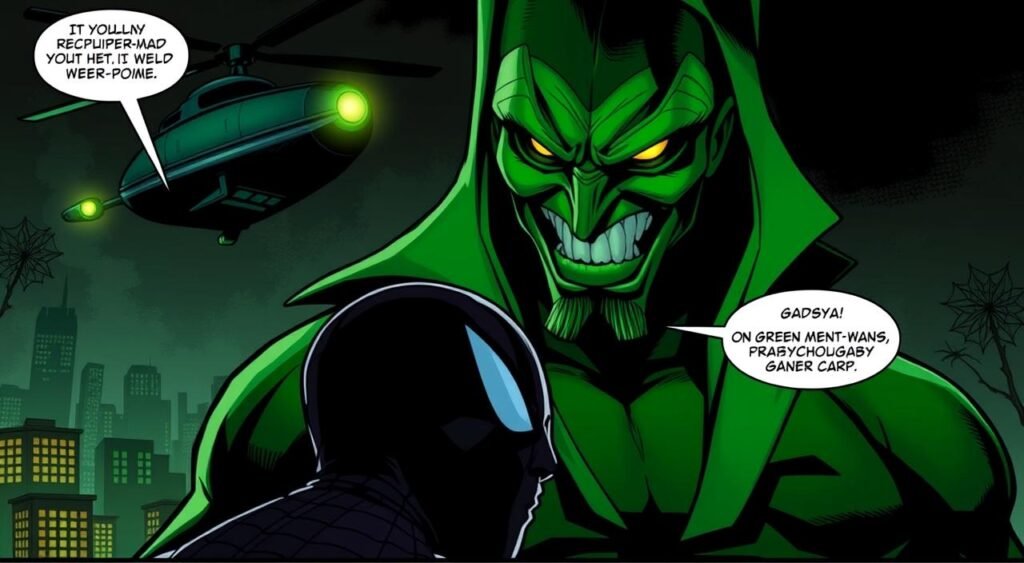
Creating Peter Parker’s Greatest Fear
One of the most significant psychological impacts of the Green Goblin on Spider-Man is the creation of Peter’s greatest fear: failing to protect those he loves.
By targeting Mary Jane and putting her in danger, the Green Goblin exploits Peter’s sense of responsibility and pushes him to his limits.
This fear is not just about losing someone he cares about; it’s also about the guilt and responsibility that comes with being unable to prevent the tragedy.
The Green Goblin’s knowledge of Peter’s secret identity further exacerbates this fear, as it allows him to target those closest to Peter with precision.
This personal touch transforms what could have been a standard hero-villain dynamic into something far more psychologically complex and challenging for Spider-Man to navigate.
The Bridge Incident and Its Lasting Trauma
The infamous bridge incident, where Mary Jane is endangered, is a pivotal moment in the psychological warfare between Spider-Man and the Green Goblin.
The trauma of having to catch MJ as she falls from the bridge leaves a lasting impact on Peter, shaping his approach to heroism and his personal relationships.
The fear of losing someone he loves becomes a recurring theme in Spider-Man’s life, influencing his decisions and actions as a hero.
The Green Goblin’s actions during this incident not only put Mary Jane’s life at risk but also force Spider-Man to confront his worst fears.
The memory of this event continues to haunt Spider-Man, serving as a reminder of the risks he faces as a hero and the personal costs he must bear.
The trauma experienced during this time continues to influence Spider-Man’s life, making him more cautious and determined to protect those he cares about.
Dual Identities: Mirrors of Each Other
Norman Osborn and Peter Parker, though vastly different in their moral compass, share a common thread – the struggle with dual identities.
This parallel is particularly evident when examining their adoption of personas and the philosophies that guide their actions.
The Mask of Norman vs. The Mask of Peter
Both Norman Osborn and Peter Parker wear masks, literal and figurative, that define their dual identities.
For Peter, the mask represents his heroic ideals, a symbol of his commitment to protecting others. In contrast, Norman’s mask as the Green Goblin embodies his darkest impulses, unleashing a persona that is ruthless and devoid of empathy.
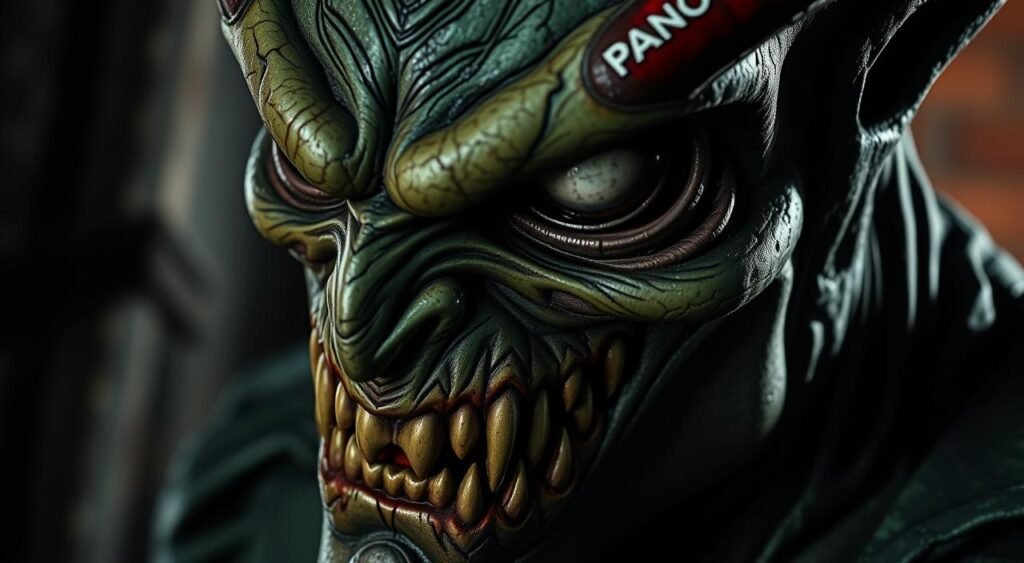
The way they choose to utilize their alternate identities starkly highlights their differing values. While Peter’s identity as Spider-Man is a selfless expression of his strength as a hero, Norman’s transformation into the Green Goblin is a manifestation of his inner turmoil and selfish desires.
Power and Responsibility: Opposing Philosophies
A critical aspect of their dual identities lies in their philosophies regarding power and responsibility. Peter Parker embodies the mantra “with great power comes great responsibility,” using his abilities for the greater good.
Conversely, Norman Osborn, as the Green Goblin, believes that power entitles him to act as he sees fit, disregarding the consequences for others.
This fundamental difference in their approach to power underscores the contrasting paths they have chosen, with Peter striving to be a hero and Norman succumbing to villainy.
Their journeys highlight the thin line between heroism and villainy, demonstrating how similar circumstances can lead to dramatically different outcomes based on one’s core values and the way one chooses to wield their strength in life.
The Father Figure Paradox
Norman Osborn’s character serves as a twisted father figure to Peter Parker, creating a paradoxical dynamic.
This complex relationship is rooted in the contrast between Norman’s genuine care for his son Harry and his adversarial yet oddly paternal feelings towards Peter.
Contrasting Relationships: Norman and His Sons
Norman Osborn’s relationship with his biological son Harry is vastly different from his dynamic with Peter Parker.
While Norman genuinely cared for Harry, his discovery that Harry was heartbroken over Mary Jane Watson’s love for Peter sparked a deep-seated hatred towards Peter.
Norman blamed Peter for ‘stealing’ MJ from Harry, illustrating a twisted form of fatherly concern. This contrast highlights the complexity of Norman’s character and his warped perception of family dynamics.
- Norman’s paternal feelings towards Harry are genuine, yet misguided.
- His adversarial relationship with Peter is a dark reflection of a father-son dynamic.
- The contrast between these relationships underscores the psychological complexity of Norman Osborn.
Peter’s Quest for Mentorship and Guidance
Peter Parker’s life has been marked by a search for mentorship and father figures, from Uncle Ben to characters like Tony Stark.
Norman Osborn represents the dark side of this dynamic, embodying a twisted version of fatherly guidance.
Peter’s rejection of Norman as a father figure is a testament to his commitment to Uncle Ben’s values, creating a psychological battle over Peter’s moral inheritance.
Peter’s journey is characterized by his efforts to distinguish between positive and negative influences, ultimately choosing to follow the values instilled in him by Uncle Ben.
This decision shapes his identity as Spider-Man and guides his actions as a hero.
Media Portrayals and Their Influence
Media portrayals have been instrumental in molding the public’s perception of the Green Goblin, making him one of Spider-Man’s most intriguing foes.
The character’s depiction in various media, including the 1994 television show Spider-Man: The Animated Series and Sam Raimi’s Spider-Man film trilogy from 2002-2007, has significantly contributed to his widespread recognition.
The Split Personality Misconception
One of the most prevalent misconceptions about Norman Osborn is that he suffers from dissociative identity disorder, or split personality.
This interpretation, popularized by various media adaptations, suggests that Osborn’s transformation into the Green Goblin is a result of a fractured psyche.
However, this portrayal contradicts the original comic book narrative, where the Goblin persona is a distinct identity rather than a result of a psychological disorder.
The misconception likely arose from the dramatic potential of portraying Osborn as struggling with an internal conflict, manifesting as the Green Goblin.
This “Jekyll and Hyde” interpretation simplifies the complex dynamics between Osborn and the Goblin, making it more appealing for film and television.
While on assignment for the Daily Bugle, Ben Urich’s nephew Phil stumbles upon the Green Goblin’s old lair.
Raimi’s Films vs. Comic Book Reality
Sam Raimi’s Spider-Man films, particularly the first installment, played a significant role in popularizing the Green Goblin’s character.
However, the film’s portrayal of Norman Osborn, as played by Willem Dafoe, differs from the comic book version.
In the comics, the Green Goblin is a deliberate and calculated persona, not a result of a disorder. This distinction is crucial in understanding the character’s psychological complexity.
For a deeper dive into the Green Goblin’s character, visit https://heroandvillainworld.com/green-goblin/.
The comic book version offers a nuanced exploration of Norman Osborn’s psyche, highlighting his intelligence and cunning as key factors in his transformation into the Green Goblin.
Beyond Death: The Psychological Haunting
The Green Goblin’s influence lingered, haunting Peter Parker long after Norman Osborn’s supposed death.
The trauma inflicted by the Green Goblin continued to affect Peter’s life in profound ways, shaping his identity as Spider-Man and influencing his relationships with others.
Living in the Shadow of Trauma
The Green Goblin’s actions created deep psychological wounds in Peter Parker. These wounds never fully healed, even years after their most devastating encounters.
As a result, Peter struggled to form healthy relationships and often found himself questioning his own judgment.
The memory of the Green Goblin served as a constant reminder of the trauma he had endured, affecting his approach to heroism and his interactions with other villains over time.
“The trauma of the past can shape us in ways we’re not even aware of, influencing our decisions and our relationships in profound ways.”
The Ghost That Never Leaves
Writers used the “ghost” of Norman Osborn as a psychological presence in Spider-Man stories for years before his actual return.
This presence continued to affect Peter Parker’s development as both a hero and a person. The Green Goblin’s legacy loomed large, a reminder of the trauma that Peter had faced and the challenges he had overcome.
In many ways, the Green Goblin became a symbol of the fears that Peter struggled to overcome, a representation of the darker aspects of his own psyche.
As Peter navigated the complexities of his role as Spider-Man, he was forced to confront the shadow of the Green Goblin, a presence that haunted him in the world he inhabited.
| Aspect | Impact on Peter Parker |
|---|---|
| Psychological Trauma | Deep, lasting wounds |
| Heroic Approach | Influenced by the Green Goblin’s actions |
| Relationships | Affected by trust issues and fear |
In conclusion, the Green Goblin’s impact on Peter Parker was profound and lasting, shaping his identity and influencing his relationships in meaningful ways.
The trauma he experienced continued to haunt him, a reminder of the challenges he faced as Spider-Man. As Peter moved forward, he was forced to confront the legacy of the Green Goblin, a presence that continued to loom large in his way of thinking.
The memory of his father figure, Norman Osborn, and the trauma associated with it, remained a significant factor in Peter’s life.
Norman’s Return: Escalation of Psychological Warfare
Upon his return to the comics in 1996, Norman Osborn’s depiction changed, showcasing a more evil and monstrous personality.
This transformation marked a significant escalation in the psychological warfare between Norman, as the Green Goblin, and Spider-Man.
From Personal Vendetta to Calculated Torment
Norman’s return saw him evolve from a personal nemesis to a calculated psychological tormentor. He began to devise elaborate schemes designed to break Spider-Man’s spirit rather than just engaging in physical confrontations.
This shift was evident in how he started targeting Spider-Man’s loved ones, includingMary Jane, as part of his strategy to destroy Peter Parker psychologically.
By doing so, Norman aimed to undermine Spider-Man’sstrengthby attacking his personal life, making it harder for him to maintain his heroic facade.
Breaking Spider-Man’s Spirit
The psychological games played by Norman after his return were not just about physical harm but about eroding Spider-Man’s will to fight.
By involvingMary Janeand other loved ones in his schemes, Norman sought to make Spider-Man question his ability to protect those he cared about, thereby breaking his spirit.
This approach demonstrated Norman’s growth as a villain, becoming more calculating and less impulsive while maintaining his core obsession with destroying Peter Parker.
Thefatherfigure dynamics between Norman and Peter, as well as Norman and his son Harry, played a significant role in this psychological warfare, complicating the relationships and further tormenting Spider-Man.
Conclusion: The Unending Battle Within
The battle between Spider-Man and the Green Goblin is more than a physical confrontation; it’s a deep-seated psychological war that has defined both characters.
Over the years, this iconic rivalry has evolved, captivating audiences worldwide. At its core, the Green Goblin’s impact on Peter Parker is a testament to the complexity of their relationship, influencing not just the hero’s battles but his very life and family dynamics.
As we reflect on their encounters, it becomes clear that the Green Goblin’s actions have left an indelible mark on Spider-Man, affecting his personal relationships, including those with Mary Jane.
For a deeper dive into the psyche of the Green Goblin, visit this insightful analysis. The way Spider-Man navigates these challenges face to face with his nemesis speaks to the strength of his character and the enduring hero he strives to be.
Their conflict is not just about physical battles; it’s a psychological tug-of-war that has shaped Spider-Man’s journey.
As Peter Parker continues to face the challenges posed by the Green Goblin, he must also confront his own vulnerabilities and the values he holds dear.
This internal struggle is a powerful reminder of the lasting impact of psychological trauma in superhero narratives, influencing the way heroes like Spider-Man navigate their life and the world around them.
In conclusion, the unending battle between Spider-Man and the Green Goblin represents not just an external conflict but an internal one—a battle for Peter Parker‘s soul and the values he chooses to uphold.
As their story continues to unfold in modern comics and film, it remains a compelling narrative of heroism, adversity, and the complex dynamics between a hero and his most formidable foe, often echoing the strained relationship between a person and their father figure.
FAQ
Q: What triggered Norman Osborn’s transformation into the Green Goblin?
A: Norman Osborn’s transformation into the Green Goblin was triggered by his exposure to an unstable serum that enhanced his physical strength but also exacerbated his mental disorder, leading to a split personality.
Q: How did the Green Goblin’s actions affect Peter Parker’s personal life?
A: The Green Goblin’s actions had a significant impact on Peter Parker’s personal life, causing stress and anxiety that affected his relationships, particularly with Mary Jane, and putting those he cared about in harm’s way multiple times.
Q: What is the significance of the father-son dynamics between Norman Osborn and Harry in the context of the Green Goblin’s character?
A: The complicated father-son dynamics between Norman Osborn and Harry Osborn play a crucial role in understanding Norman’s motivations and the way his character evolves, particularly in terms of his desire for approval and his need to live up to his family’s expectations.
Q: How does the Green Goblin’s character influence the theme of power and responsibility in the Spider-Man narrative?
A: The Green Goblin’s character serves as a foil to Spider-Man, highlighting the different philosophies regarding power and responsibility, with Norman Osborn believing that might makes right, while Peter Parker advocates for using power for the greater good.
Q: In what ways do the media portrayals of the Green Goblin differ from the comic book reality?
A: Media portrayals, such as those in Sam Raimi’s films, often simplify or misrepresent the Green Goblin’s character, focusing on the split personality aspect, whereas the comic book reality presents a more nuanced and complex character with a rich backstory.
Q: How does the Green Goblin’s legacy continue to affect Spider-Man even after his death?
A: The Green Goblin’s actions and legacy continue to haunt Spider-Man, serving as a reminder of the trauma and stress he endured, and influencing his decisions and actions as a hero, as he strives to prevent similar tragedies from occurring in the future.
